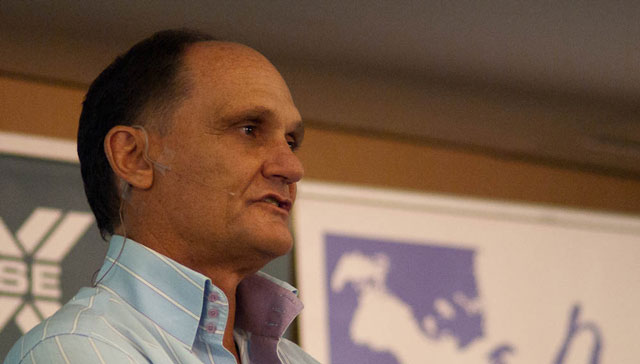
The combined R5,7bn Cell C has received from its majority shareholder, Oger Telecom, and in financing from a Nedbank-led grouping will be used to improve its network and win market share from rivals Vodacom and MTN, says the operator’s CEO, Alan Knott-Craig.
But Knott-Craig tells TechCentral that competing meaningfully with its bigger rivals will require regulatory intervention from the Independent Communications Authority of South Africa (Icasa).
Cell C will use the cash injection “fundamentally to run the business”.
“That comprises building network capacity a lot more rapidly,” Knott-Craig says. “Our traffic has doubled in the past 12 to 15 months. A lot of capacity has already gone in, but we need a lot more, and a lot more coverage.”
A large portion of the funds will be earmarked for building new infrastructure and for acquiring market share. “The market is saturated. For us to gain market share, we clearly need to take customers from our competitors and that is usually slightly more expensive than if you were to take them the first time around.”
Cell C’s customer base has grown by more than 2m in the past year, to 11,5m, according to Knott-Craig. “Unless we build sufficient market share, we can’t achieve the scale to make the company completely sustainable.”
He stresses that regulatory intervention is also crucial if smaller players — he includes Cell C in the category — are to achieve the sort of market share required to be both sustainable and substantively competitive.
“It’s not good enough simply to have these cash injections, which are, to a degree, dependent on the regulatory review process,” he says. “The shareholders are watching to see what South Africa is going to do — whether it will fall in line with other countries in terms of how the market is regulated.”
According to Knott-Craig, South Africa is “somewhat behind” best practice worldwide in telecoms regulation but the decision by Icasa to conduct a review of the cost to communicate in the country, along with parliament’s efforts to raise the matter, are “good signs”.
Cell C isn’t willing to disclose the details of the conditions surrounding the R2,2bn debt raised through the long-term financing package arranged by Nedbank. The operator’s chief financial officer, Robert Pasley, says it’s a complex debt facility involving a number of players.
“In principle, on average, the [debt] tenure is around six years,” Pasley says. He declines to comment on the interest rate attached to the loan other than to say it’s “extremely competitive”.
Similarly, he won’t say what assurances Oger Telecom has provided to the debt providers. “Suffice it to say, Nedbank is taking some risk on Cell C and it’s obviously comfortable with our business plan in doing that.”
Knott-Craig won’t be drawn on what course of action Cell C will take if the regulatory interventions for which he’s hoping — including aggressive “asymmetry” in wholesale mobile termination rates — don’t come to fruition. Mobile termination rates are the fees the operators charge to carry calls between their networks. With asymmetry, smaller operators pay less to send calls to bigger rivals than the other way around.
“Something like 85% or more of the market is controlled by two operators. That’s not sustainable in the medium or the long term,” Knott-Craig says.
Typically, operators worldwide with “significant market power” are the only ones that do not require regulatory assistance, he adds.
“That’s 25% market share of customers, which is probably around 19-20% market share of revenue. We need to get to that point. We’re more than halfway there, but we need to get there. Until we do, regulatory help or assistance, just like anywhere else in the world, is essential.” — (c) 2013 NewsCentral Media




